Vermont offers plenty of ice fishing and skating opportunities for winter weather enthusiasts. Here are seven lakes in Vermont that completely freeze over in winter and when you might expect a thaw. Ice fishing fanatics and wild skaters, head up!
Lake Morey
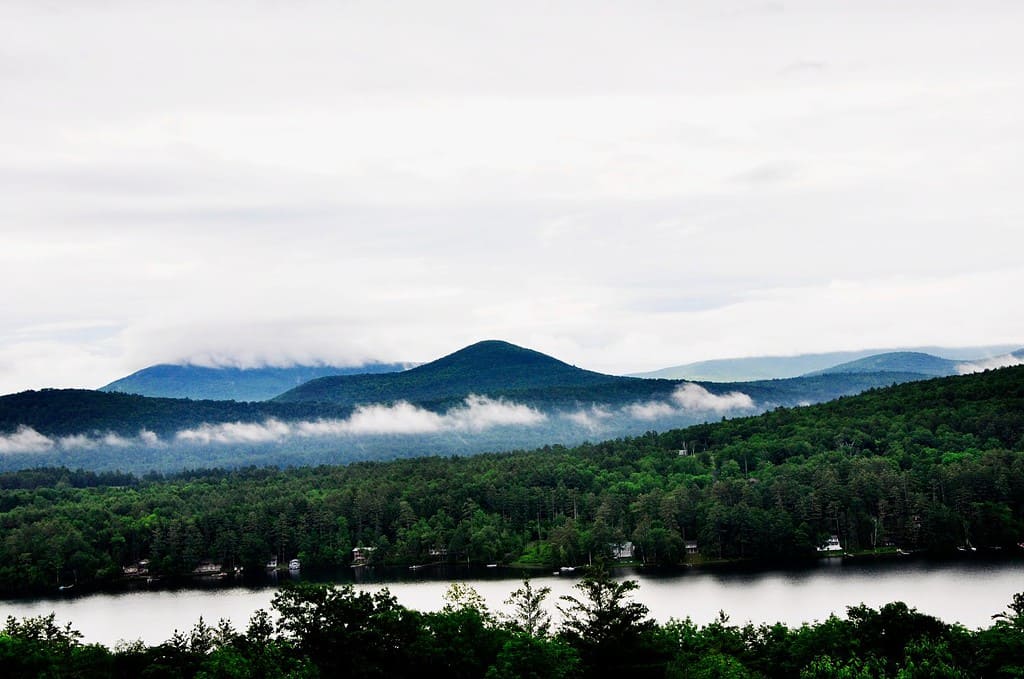
Lake Morey is 48 feet deep, so it’s early to freeze over.
©Magdalena Karpiuk/Shutterstock.com
Lake Morey is a 545-acre lake in New England. It’s only 48 feet deep, so it completely freezes over early in the season. Ice out on Lake Morey usually occurs in early April.
During January, resort staff prepare a 4.3-mile ice trail that loops and curves around its shores. It’s the longest ice trial of its type in the United States. Skaters report it’s bumpy, lumpy, and not like a perfectly groomed ice-skating rink, making it all the more fun.
Animals you might spot at frozen-over Lake Morey include iconic bald eagles, river turtles, loons, and herons. Perch, bass, and blue gill lurk beneath the ice. Visitors discovering any distressed animal can call the Lake Morey Protective Association for help.
Lake Champlain

Lake Champlain freezes over, on average, once every four years.
©PhotoArtStudio29/Shutterstock.com
Vermont’s most well-known ice-over lake is Lake Champlain, which lies in Vermont, New York, and Quebec. However, this iconic lake hasn’t frozen over entirely in recent years. Experts say it freezes once every four years on average, and that’s due to rising temperatures.
The best chance of experiencing frozen Lake Champlain is in February and March. Ice out tends to occur in April. Lake Champlain’s ice over records began in 1816, and today, folks take bets on when the ice melts.
At 120 miles long, this lake provides recreational opportunities year-round, including top-class fishing for perch, pike, and salmon. However, experts suggest that because the lake doesn’t consistently freeze over every winter, cold-water fish like salmon may find themselves pushed out by warmer-temperature fish, such as bass. Ice’s lack of complete darkness may also harm over-wintering fish eggs.
Joe’s Pond
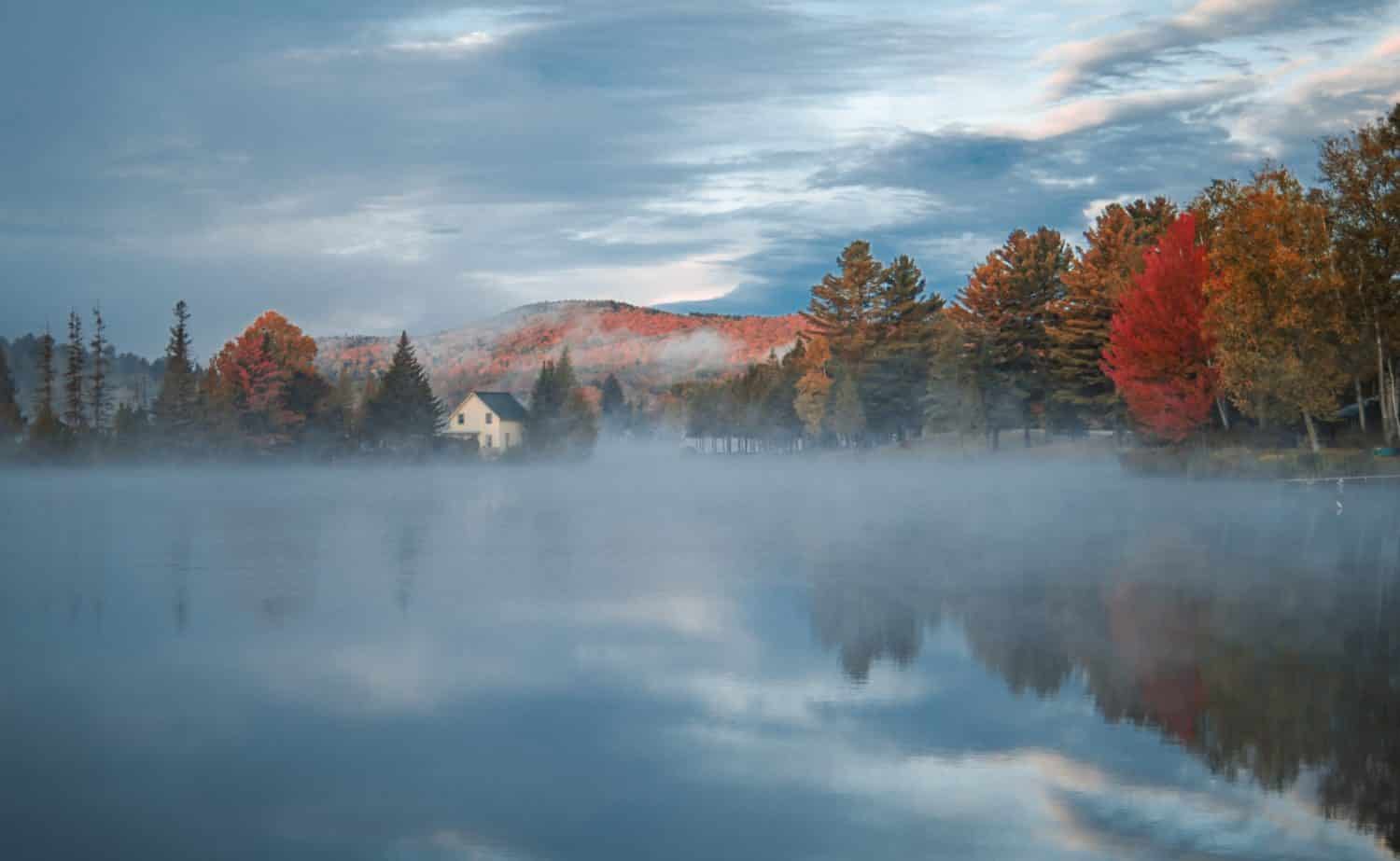
Joe’s Pond in West Danville completely freezes over each year.
©stevelamonda/Shutterstock.com
West Danville’s Joe’s Pond is a good bet for a complete ice-over during winter. It’s so likely to freeze over that a famous ice-out contest raises thousands of dollars each year and marks the end of winter. Very simply, when the ice melts, a digital clock falls into the lake, and this is the official “ice-out” time. The tradition started locally in 1987; today, tickets are sold worldwide. Last year, the clock fell through the ice at 4.51 a.m. on April 19.
Joe’s Pond, originally called Sozap Nebees by Native Americans, is 100 feet deep, three miles long, and ¾ a mile wide, so it’s far from the largest in Vermont. However, its ice dips three feet and reliably freezes over.
This is a popular place to live, with quaint cottages from 1887 lining its shores and the Lamoille Valley Rail Trail bringing tourists to enjoy fishing, non-motorized activities, and top-drawer bird watching. Locals regularly spot bald eagles, mourning doves, and turkey vultures
Lake Carmi

Shallow Lake Carmi freezes over faster than other Vermont lakes, only 33 feet deep.
©iStock.com/brendanboshea
Lake Carmi in Carmi State Park, Franklin, is the fourth-largest natural lake in Vermont. It’s 2.15 square miles, has 7.5 miles of shoreline, and at its deepest point reaches 33 feet.
Lake Carmi completely freezes over in winter, allowing visitors to ice skate and fish on its frozen surface. When the ice thaws in April, fishing for walleye, pike, and bass is the top recreational activity there. It’s a popular camping site, too, with 138 RV sites and running hot water.
Because Lake Carmi is considerably shallower than massive lakes like Lake Champlain, it freezes over earlier. You’ll often find ice over in late December or early January. Keep your eyes peeled for moose.
Lake Bomoseen

Lake Bomoseen freezes over entirely in January; the ice often reaches three feet thick.
©Ezume Images/Shutterstock.com
A focal point in Bomoseen State Park is Lake Bomoseen, a 2,400-acre lake in the Taconic Mountains of Castleton, Vermont, that often freezes over for winter. By January, the ice is three feet thick in places and enough to support ice fishing, but it is always essential to use flotation jackets and ropes just in case.
This lake is the largest within Vermont’s borders, providing epic hiking and wildlife spotting. Look out for bald eagles and moose here. Alongside ice skating and fishing, visitors enjoy camping in 55 RV sites. Expect the ice to thaw in early April.
Lake Willoughby
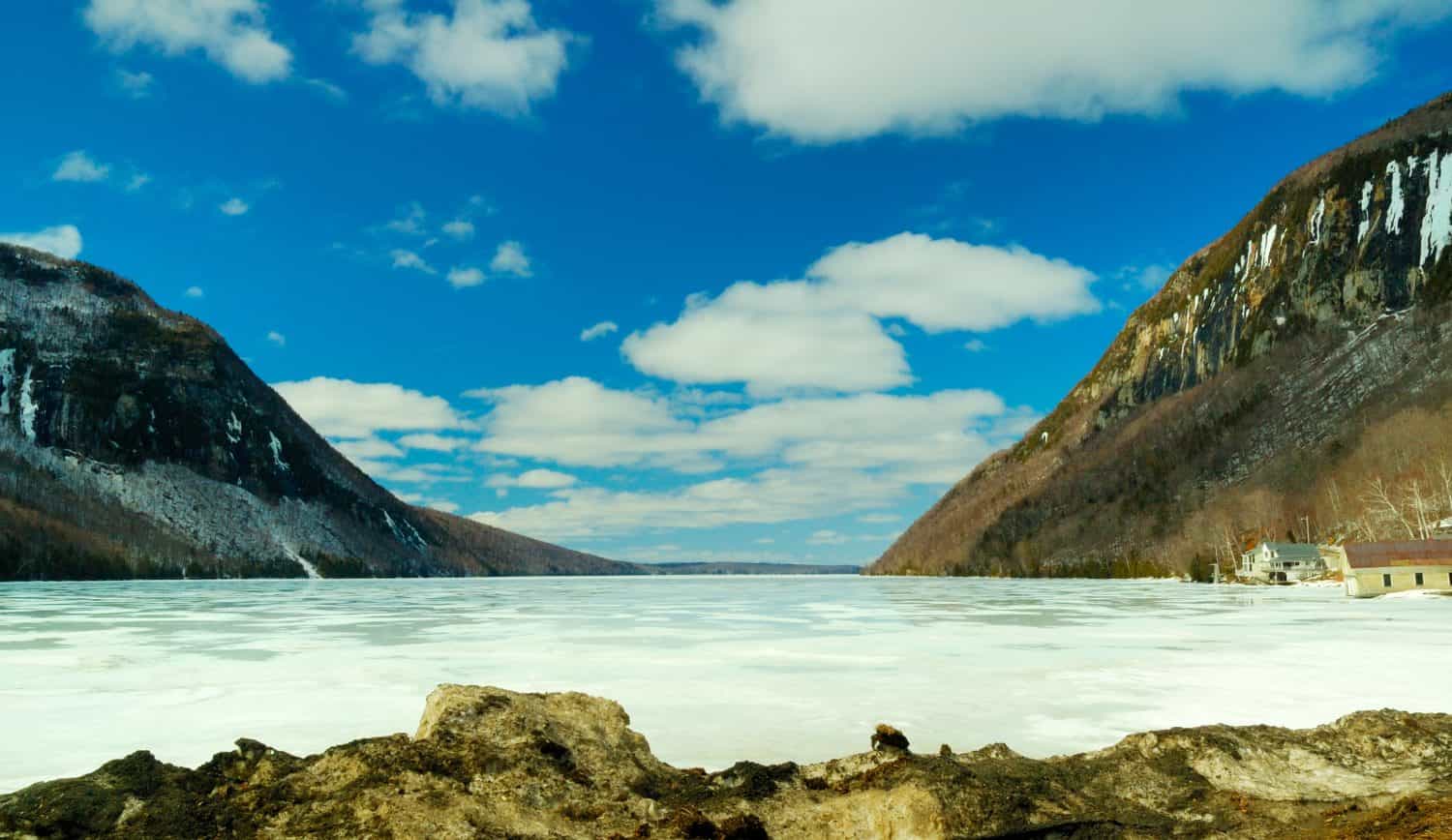
Lake Willoughby is so deep it’s one of the last Vermont lakes to freeze over.
©Rob Rudeski/Shutterstock.com
Lake Willoughby in Westmore is one of the last lakes to freeze over in Vermont because it’s so deep. It usually stays frozen until early April.
This epic winter ice skating lake is at least 300 feet deep, perhaps more. The lake’s bottom supports huge boulders, and two towering 1,000-foot-tall mountains on either side are named Mount Pisgah and Mount Hor. Glacial action carved out Lake Willoughby’s epic scenery 10,000 years ago.
Skiing, ice-skating, and ice-fishing are abundant here on frozen Lake Willoughby. Watch for black bears, bobcats, and peregrine falcons on the mountainsides as you whizz along the snow or rough ice.
Other recreational activities include kayaking, canoeing, jet-skiing, wakeboarding, and incredible fishing for salmon, lake chub, and rainbow trout. Anglers say Lake Willoughby has the best trout fishing in Vermont.
When you’re out on the ice, look below the icy depths for Lake Willoughby’s mythical (or is it?) lake monster “Willy.” Tourists first spotted Willy in 1868, and recent sightings describe a snake-like creature with a humped back.
Seymour Lake
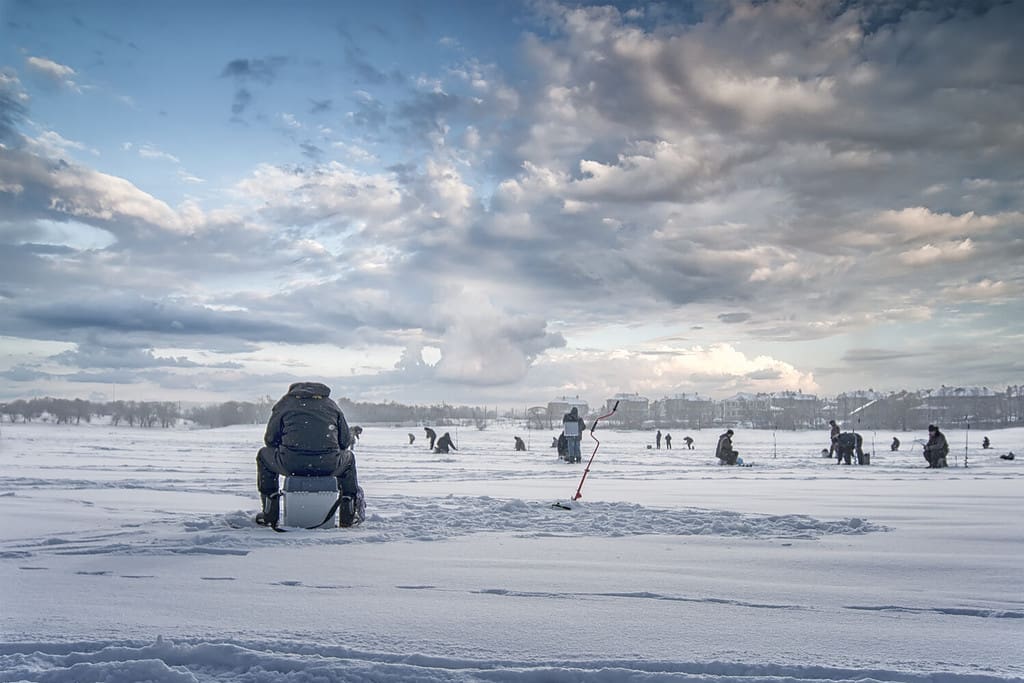
Ice fishing on Lake Seymour is a popular winter pursuit.
©ver0nicka/Shutterstock.com
Seymour Lake in Orleans County, Vermont is over 167 feet deep in places, three miles long, and two miles wide. It was named after the land’s original grant holder, Israel Seymour, but Native Americans called it Namagonic, “salmon trout spearing place,” which indicates what fish lurk in its depths.
This Vermont lake freezes over completely in early January and thaws in early spring. When ice out occurs in April, common loons flock to its abundant resources and other waterfowl. During the ice lock, Lake Seymour is a popular ice fishing spot. Along its frozen shoreline, beaver, moose, and deer are regularly spotted.
Frozen Lake Warning
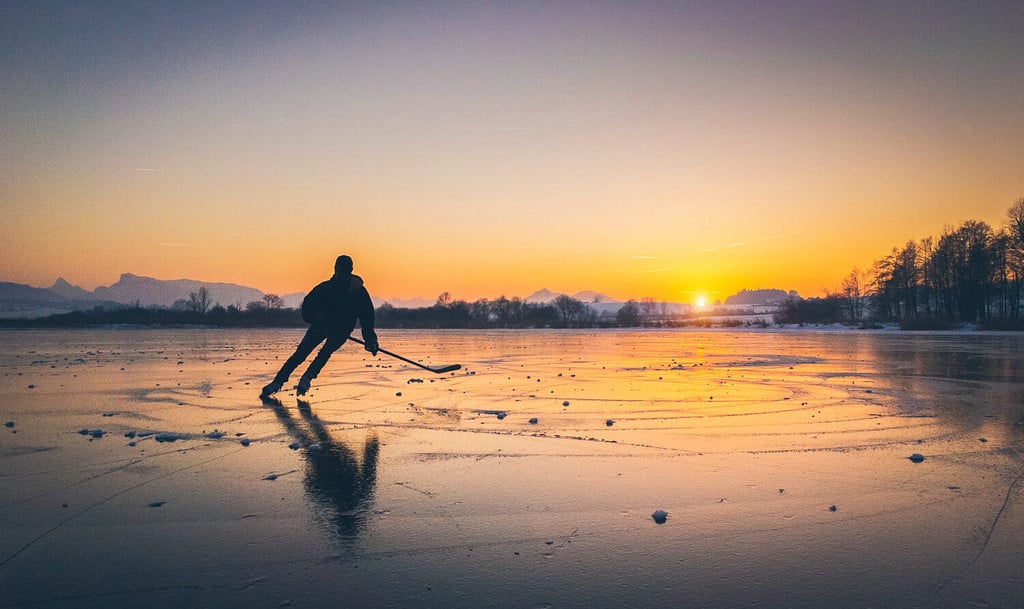
Skating is exhilarating, but ice is dangerous. Always take care of the ice, no matter how thick it looks.
©canadastock/Shutterstock.com
Although many Vermont lakes freeze over completely in winter, walking on ice always involves a certain amount of risk. There is no such thing as safe ice. Many of Vermont’s lakes offer safety information and signage for ice adventures.
Ice does not freeze at equal depths so ice walkers may find themselves on thin ice despite three solid feet just a few steps away. Ice fishers should always wear a flotation device and use safety rope, and ice skaters should not venture out individually.
The photo featured at the top of this post is © PhotoArtStudio29/Shutterstock.com
Thank you for reading! Have some feedback for us? Contact the AZ Animals editorial team.






